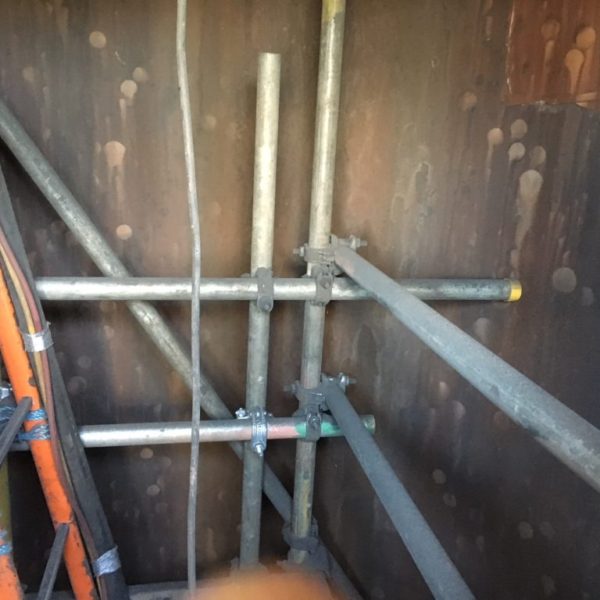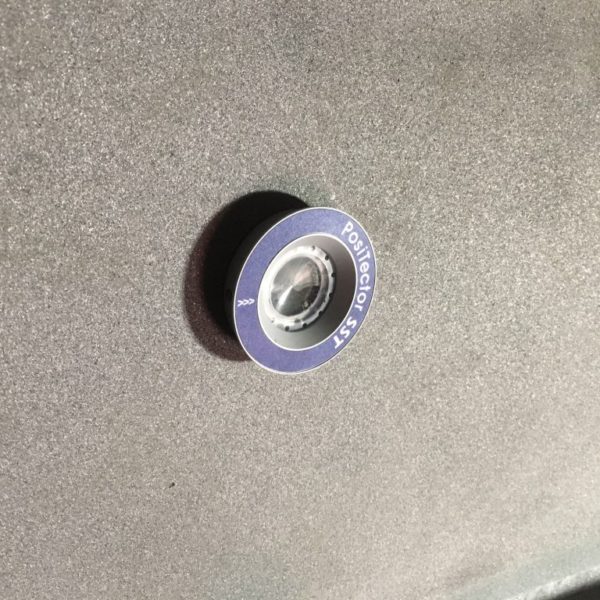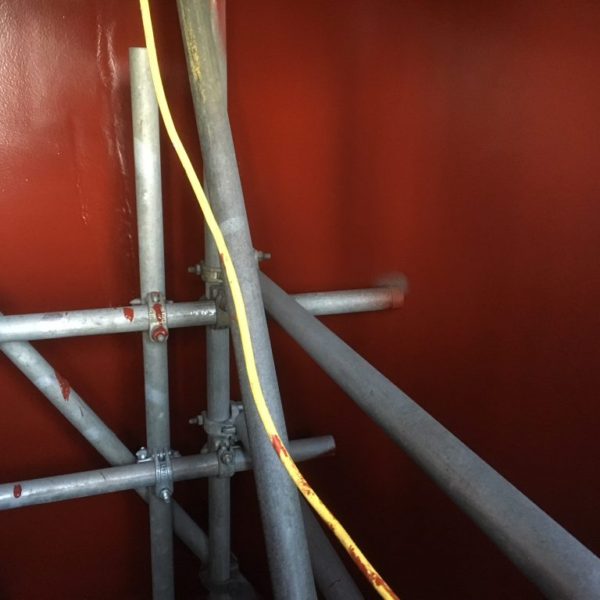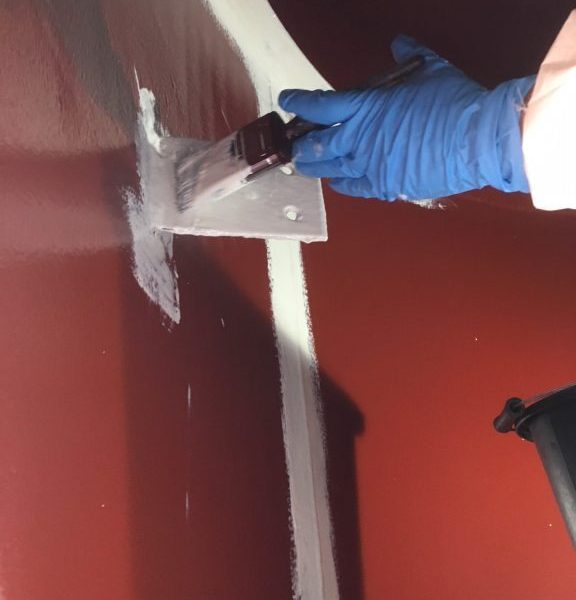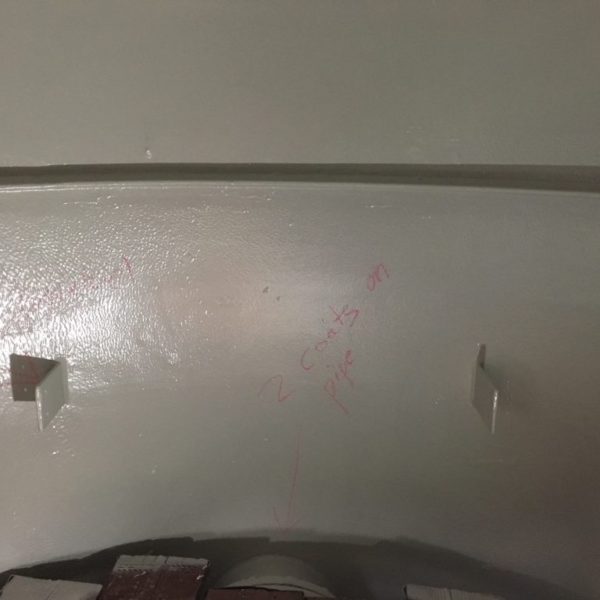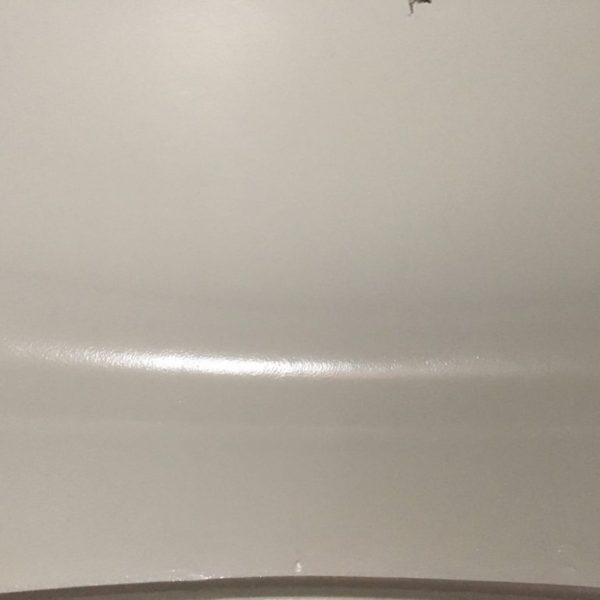THE PROBLEM
The existing chemical tanks lining had blistered extensively, we believe as a result of the use of a vinyl ester material which could not tolerate the temperatures and aggressive chemicals within the tank.
SOLUTION
A year before the entire chemical tank required relining we had installed a trial area using Chemco RB364 glass flake reinforced vinyl ester tank lining to ensure suitable temperature and chemical resistance.
This trial had proved successful so we proposed the removal of the existing lining prior to the application of Chemco’s tank lining system to a thickness of 1000 microns.
Removing the existing tank lining by abrasive blasting
All existing tank lining materials were removed by abrasive blasting using expendable copper slag abrasive media.
The blast profile was checked using a surface profile needle gauge and the presence of soluble metal salts using brestle patch. Both of these tests are essential to ensure the correct performance of the tank lining.
Applying the Chemco RB364 by brush
Once prepared all angles and edges received stripe coats of Chemco RB364 by brush to ensure full thickness of the tank lining was achieved in these areas where coatings pull thin through gravity and surface tension. Separate stripe coats were applied at each stage of the tank lining process as per good coating practice.
Chemco RB364 was spray applied in three coats of contrasting colour to a total thickness of 1000 micrometers.
The completed tank lining was checked for pin holing using a DC holiday spark tester. Where found these were marked with chalk prior to touching in using the same material.


